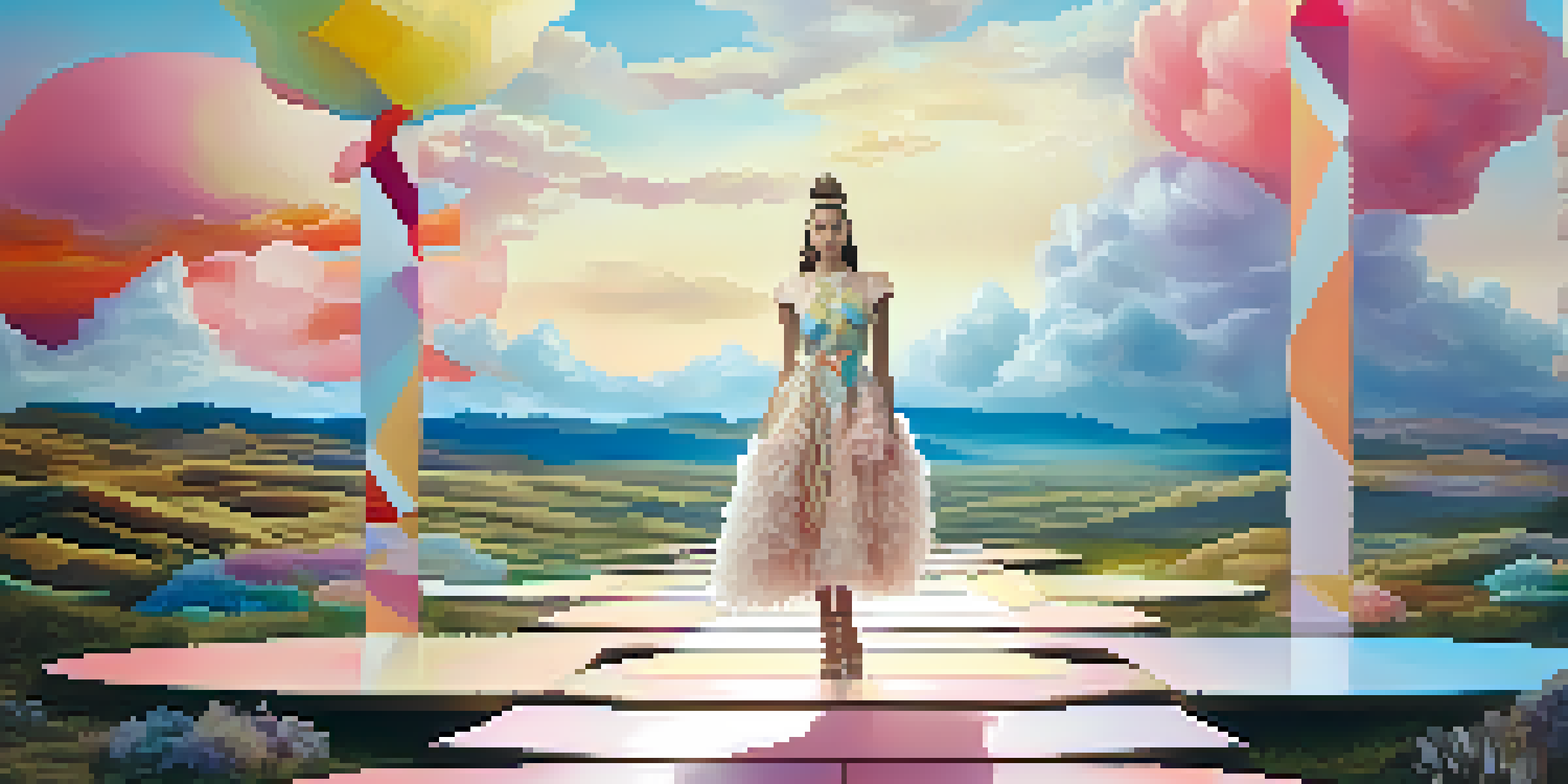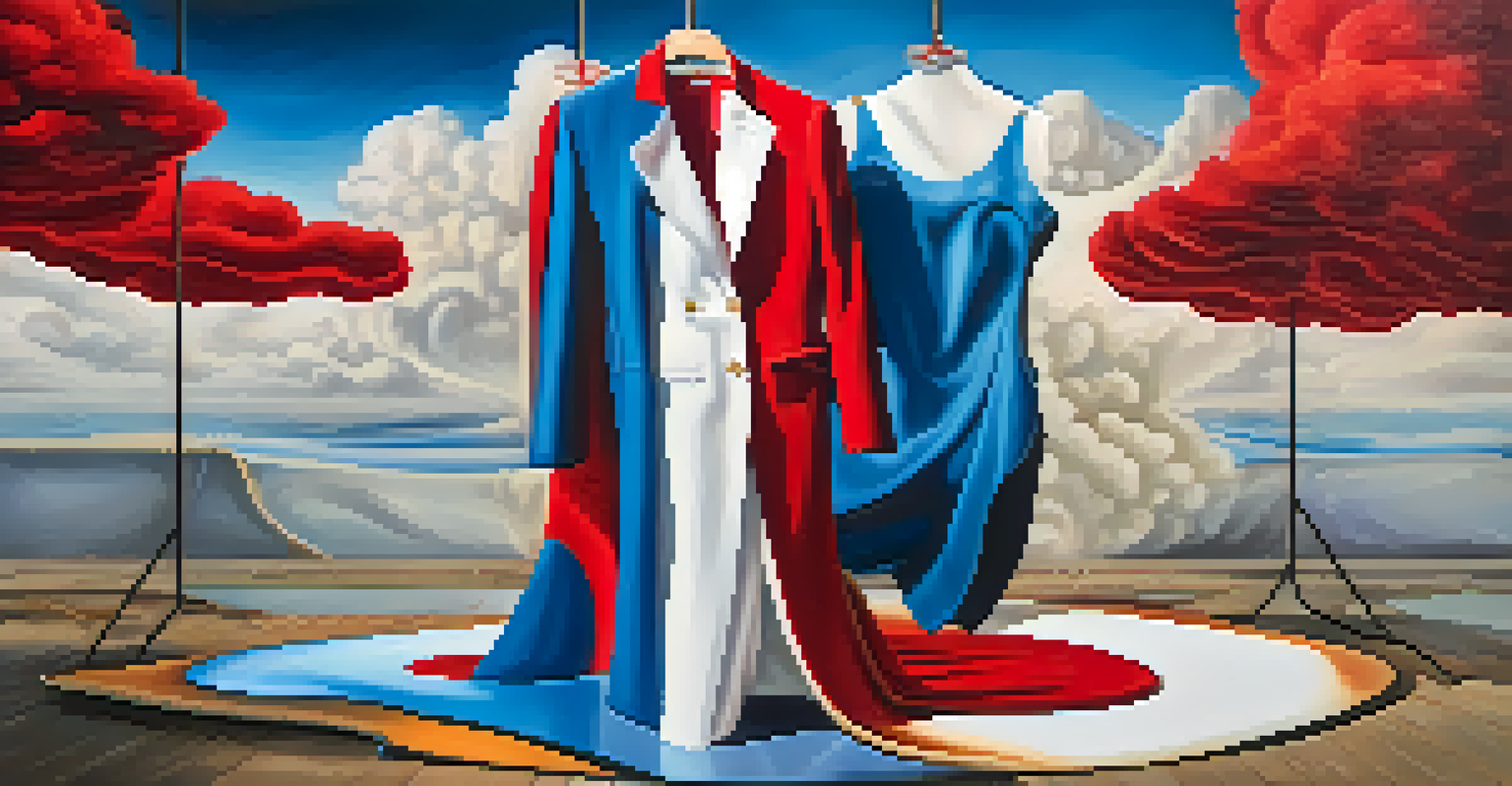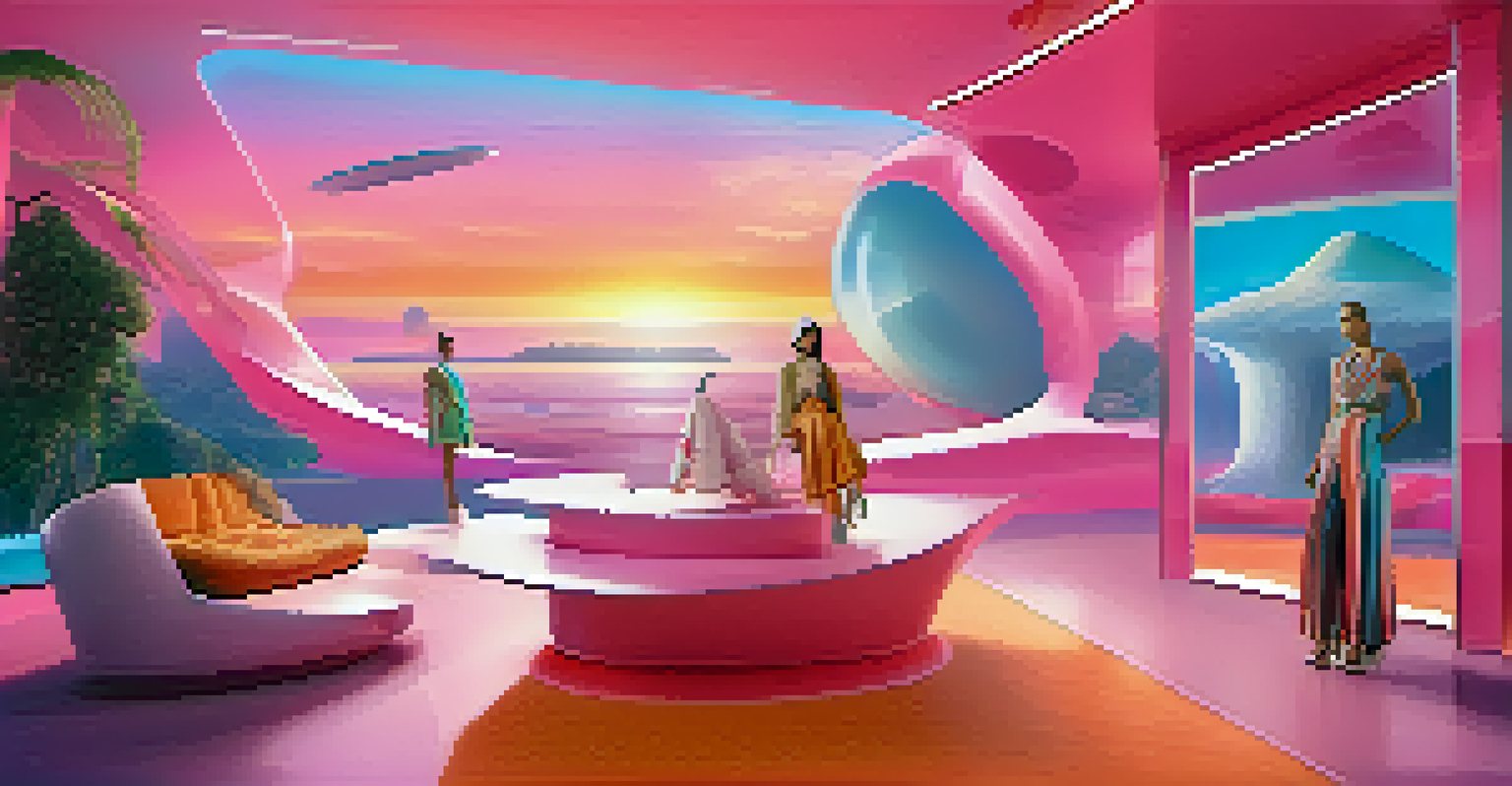The Influence of Surrealism on Fashion Design and Aesthetic Trends

Understanding Surrealism: Origins and Key Concepts
Surrealism, an art movement that emerged in the early 20th century, aimed to challenge the conventional perceptions of reality. It sought to unlock the unconscious mind and explore dreams, fantasies, and the bizarre. Many of its pioneers, like André Breton, believed that the imagination was crucial in creating art that transcended logical boundaries.
Surrealism will usher in a new world of imagination and creativity that will free us from the constraints of reality.
This movement not only influenced visual arts but also left an indelible mark on literature and, crucially, fashion. Designers began to incorporate surrealist ideas, resulting in creations that defied traditional norms and expectations. The blending of reality and fantasy became a hallmark of this artistic approach, encouraging bold experimentation in design.
As we look into the world of fashion today, it’s essential to understand these foundational ideas of surrealism. They set the stage for a unique blend of creativity that has permeated various aesthetic trends, making fashion a canvas for surrealist expression.
Surrealism in Iconic Fashion Moments
Throughout history, several fashion designers have embraced surrealism in their work, creating iconic moments that resonate with audiences. For instance, Salvador Dalí collaborated with fashion houses like Schiaparelli, resulting in unforgettable pieces such as the famous lobster dress. This dress exemplified the whimsical and shocking elements of surrealism, capturing public imagination.

Moreover, designers like Alexander McQueen and John Galliano have also drawn inspiration from surrealist themes, crafting garments that blur the line between reality and fantasy. McQueen's theatrical shows often featured elements of the surreal, challenging viewers to engage with fashion on a deeper level. These moments have not only been visually stunning but have also sparked conversations about the meaning behind the clothing.
Surrealism Shapes Fashion's Narrative
The influence of surrealism encourages designers to challenge conventional norms and explore identity through imaginative creations.
These iconic fashion moments serve as reminders of how surrealism challenges our perceptions and invites us to see beauty in the unexpected. The influence of surrealism is a testament to the power of imagination in shaping the fashion narrative.
The Role of Color and Texture in Surrealist Fashion
Color and texture are vital components of surrealist fashion, often used to evoke emotions and create extraordinary visual effects. Surrealist designers frequently employ bold, unexpected color combinations that challenge traditional palettes. For example, a bright red paired with an electric blue can create a jarring yet captivating effect, embodying the essence of surrealism.
The task of art is to make the invisible visible.
Textures in surrealist fashion can also evoke a sense of the uncanny. Fabrics that mimic organic forms or feature unusual patterns can transport wearers and observers into a dreamlike state. Think of garments that appear to melt or morph—these designs push boundaries and invite curiosity.
This playful approach to color and texture not only makes surrealist fashion visually striking but also connects to deeper emotional responses. By engaging the senses, these designs encourage wearers to explore their identity and express their individuality.
Surrealism and the Concept of Identity in Fashion
Surrealism's exploration of identity has profoundly influenced fashion, prompting designers to question norms and expectations. The movement often delves into the complexities of self, encouraging a fluid interpretation of identity. In fashion, this translates to the creation of garments that challenge conventional gender roles and societal standards.
For instance, many contemporary designers are embracing androgynous styles that blur the lines between masculine and feminine aesthetics. This reflects surrealism’s emphasis on breaking free from constraints and embracing multifaceted identities. By wearing such pieces, individuals can express their unique narratives and challenge societal norms.
Color and Texture Evoke Emotion
Bold color combinations and unique textures in surrealist fashion create visually striking designs that engage the senses and express individuality.
The connection between surrealism and identity in fashion highlights the importance of self-expression. It empowers individuals to explore their true selves, celebrate diversity, and embrace the beauty of individuality.
The Influence of Surrealist Icons on Modern Aesthetics
Surrealist icons, such as Frida Kahlo and René Magritte, have left a lasting impact on modern aesthetics, influencing fashion designers and brands. Kahlo's vibrant colors and bold patterns resonate with contemporary fashion, inspiring collections that celebrate individuality and cultural heritage. Her unique style embodies a fusion of personal narrative and artistic expression.
Similarly, the dreamlike imagery of Magritte has inspired countless fashion campaigns, inviting designers to incorporate surreal elements into their work. His iconic bowler hats and whimsical compositions challenge viewers to see the ordinary in extraordinary ways, leading to innovative designs that captivate.
These surrealist icons serve as a bridge between art and fashion, demonstrating that creativity knows no boundaries. Their influence encourages designers to think outside the box and create collections that are not only aesthetically pleasing but also thought-provoking.
Sustainable Fashion: A Surrealist Perspective
As the fashion industry grapples with sustainability, surrealism offers a unique perspective on how we view consumption and design. Surrealist principles encourage us to rethink our relationship with fashion, prompting a shift from fast fashion to more thoughtful, artistic creations. By embracing the surreal, designers can create pieces that are not only beautiful but also meaningful.
This approach might include the use of upcycled materials, transforming discarded items into wearable art. For example, a dress made from repurposed fabrics can tell a story of transformation, echoing surrealism’s fascination with the unexpected. Such designs challenge the notion of waste and highlight the beauty of reinvention.
Sustainability Through Surrealism
Surrealism inspires a shift towards sustainable fashion by encouraging thoughtful design and the creative reuse of materials.
Ultimately, viewing fashion through a surrealist lens invites us to consider the deeper implications of our choices. It encourages sustainable practices that harmonize artistry with environmental consciousness, paving the way for a more mindful fashion industry.
The Future of Fashion: Surrealism in a Digital Age
As technology continues to evolve, the intersection of surrealism and fashion is poised for exciting developments in the digital age. Virtual reality and augmented reality are opening new avenues for designers to create immersive experiences that transport consumers into surreal worlds. Imagine trying on clothing in a fantastical digital landscape—this is the future of fashion.
Furthermore, digital art and design tools allow for even greater experimentation, enabling designers to push creative boundaries. The fluidity of digital mediums encourages the mixing of reality and imagination, resulting in collections that challenge our perceptions of what fashion can be. This evolution aligns perfectly with surrealist ideals, as it embraces innovation and the power of dreams.

Ultimately, the future of fashion promises to be a vibrant tapestry woven with surrealist influences. As designers continue to explore this artistic movement, we can expect to see collections that not only captivate visually but also inspire deeper connections with the audience.